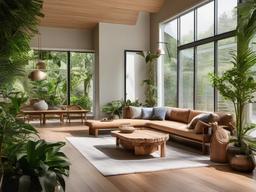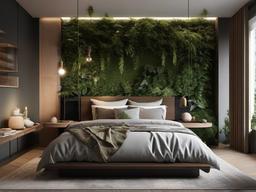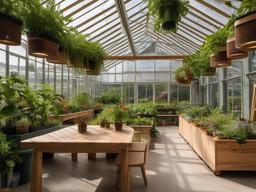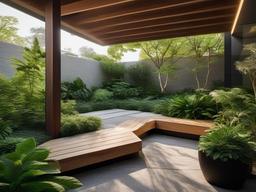Interior design decor ideas > biophilic interior design style
Use Windy AI room design generator to assist in your room interior design and home decor. Generate ideas in over 40+ interior design styles.
Biophilic design emphasizes the connection between humans and nature, incorporating natural elements into the built environment to promote well-being. This style uses organic materials, like wood, stone, and plants, alongside natural light and earthy color palettes. It focuses on creating spaces that feel calm, rejuvenating, and in harmony with nature. Biophilic interiors often include indoor gardens, water features, and large windows that blur the lines between indoors and outdoors, making it perfect for those who seek tranquility and a connection to the natural world.
Biophilic design draws inspiration from the concept of biophilia, a term popularized by biologist Edward O. Wilson in the 1980s, which refers to humanity's innate affinity for nature. The movement gained traction as a response to the increasing disconnection from nature in urban environments. Biophilic design integrates natural elements into architecture and interiors to enhance mental and physical well-being. This approach has roots in ancient cultures but has been adapted in modern times to create sustainable, health-promoting spaces.
To incorporate biophilic design into your space, use natural materials such as wood, stone, and bamboo. Add indoor plants or even a living wall to bring greenery indoors. Maximize natural light by using large windows or skylights, and choose a color palette inspired by nature, with shades of green, brown, and soft blues. Incorporate water features, such as a small indoor fountain, to create a calming atmosphere. Finally, aim for a layout that fosters a sense of openness and connection to the outdoors.
Biophilic design integrates natural elements like wood, stone, and plants, creating a harmonious balance between the indoors and outdoors. Large windows allow for ample natural light, while indoor gardens or greenery add a fresh, calming atmosphere. Earthy tones such as green, brown, and beige dominate the color palette, often accented by soft blues and whites. Key characteristics include organic shapes, natural textures, and the incorporation of water elements like fountains or ponds.
Biophilic design draws inspiration from the concept of biophilia, a term popularized by biologist Edward O. Wilson in the 1980s, which refers to humanity's innate affinity for nature. The movement gained traction as a response to the increasing disconnection from nature in urban environments. Biophilic design integrates natural elements into architecture and interiors to enhance mental and physical well-being. This approach has roots in ancient cultures but has been adapted in modern times to create sustainable, health-promoting spaces.
To incorporate biophilic design into your space, use natural materials such as wood, stone, and bamboo. Add indoor plants or even a living wall to bring greenery indoors. Maximize natural light by using large windows or skylights, and choose a color palette inspired by nature, with shades of green, brown, and soft blues. Incorporate water features, such as a small indoor fountain, to create a calming atmosphere. Finally, aim for a layout that fosters a sense of openness and connection to the outdoors.
Biophilic design integrates natural elements like wood, stone, and plants, creating a harmonious balance between the indoors and outdoors. Large windows allow for ample natural light, while indoor gardens or greenery add a fresh, calming atmosphere. Earthy tones such as green, brown, and beige dominate the color palette, often accented by soft blues and whites. Key characteristics include organic shapes, natural textures, and the incorporation of water elements like fountains or ponds.
































